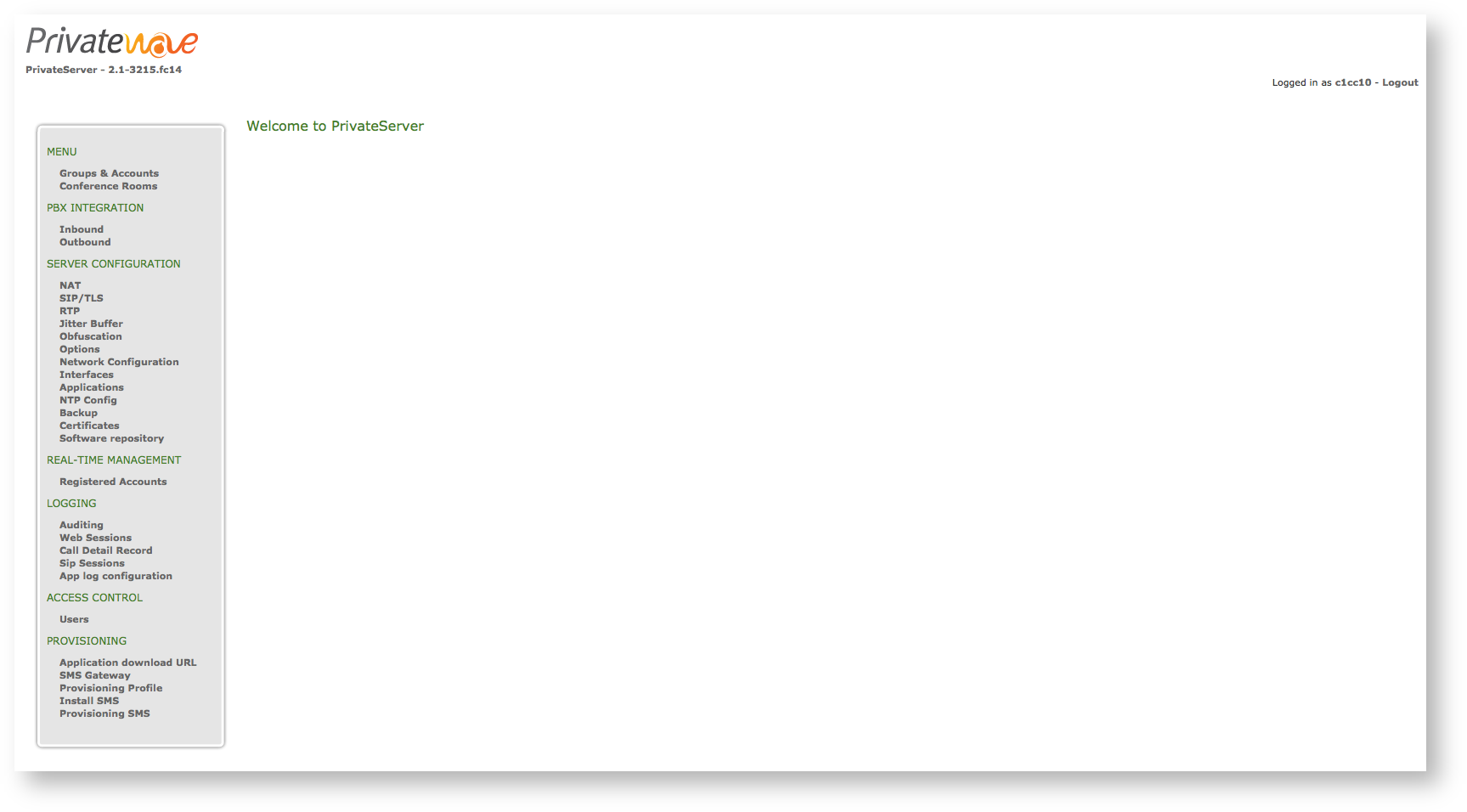
In fig. 1 You can examine the Web console home page. In the present paragraph we're going to examine and name each part of it
|
The home page is composed by 4 elements, listed below from the upper left to the right:
This is enough self-explaining. On the upper left side of the home page you can watch the company logo and just below the PrivateServer version, which in fig. 1 happens to be 2.0-2792.fc14.
This component is very important and is going to become your lead into the Web console. It's divided into sections, which are the all capital, bigger font green lines:
The main point for Secure Call service configuration. From here it's possible to create and configure Users and User's Groups. Also the Conference Rooms are managed by this section.
As the name implies, the integration from PrivateServer and another PBX (or an external SIP line) is to be done starting here.
This section is the one we are going to examine closer in the present document: here you will setup the service and the appliance.
The "Registered Accounts" menu entry would show you the SIP users once you configured them both on client and server
All the logs you need about the server behaviour
This is about configuring users, roles and access to the Web console itself
Here you can configure all the options needed to perform the automatic activation included the SMS Gateway to use and the configuration to be delivered to the client by the definition of a Provisioning Profile
The page body is the place where each menu entry is going to show you its particular interface.
From here you can Logout or access to the logged in user specific configurations and change them (ie: user's password).